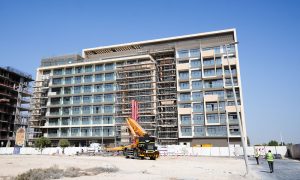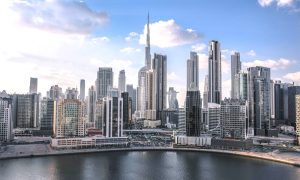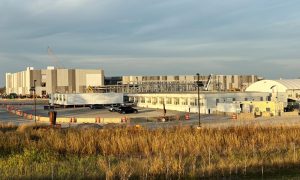What the Projects of the 50 mean for the UAE’s Construction Industry
Mohamed Swidan, Senior Director and Head of MENA at Procore looks at why a digitally progressive construction sector is needed to fulfil the UAE’s landmark developmental and economic strategy

It’s an exciting time for the UAE. The ongoing unveiling of the Projects of the 50, a raft of projects celebrating the 50th anniversary of unification and driving the nation’s next phase of growth, is making history. So far, we’ve seen new investment commitments, evolved work regulations and even a new data law – all governed by a set of ten ‘Principles of the 50’ to guide this vision of the future.
Central to this vision is the expanded role of technology. Along with a scheme to attract 100 of the world’s best coders to the country every single day, the government has launched a Fourth Industrial Revolution Programme to accelerate adoption of 4IR tech across UAE industry, with the hope to increase industrial productivity by 30%. Embracing advanced technology is recognised as critical for growth and driving efficiency.
This has huge implications for construction. The Projects of the 50 should not just facilitate change: they should inspire it too. Historically, construction has been slower than other sectors to adopt new technological tools but not only are they important in realising the full potential of the industry, they’re crucial in achieving UAE-specific goals. For example, the Dubai 2040 Urban Master Plan paints an exciting future but it’s also ambitious, centring on projects of unforeseen complexity and scale. It needs a construction sector behind it that’s working as smoothly and effectively as possible, and that relies on using the right tech.

Historically, construction has been slower than other sectors to adopt new technological tools but not only are they important in realising the full potential of the industry, they’re crucial in achieving UAE-specific goals, says Mohamed Swidan
So, what does the ‘right tech’ look like in this context?
It’s tools that can take all the complexity of a construction project and simplify it down – without losing accuracy – so processes are optimised and confusion kept to a minimum. This can be achieved through single platform technology: one place that can connect every stakeholder on a project, from site operative through to client, and gives each oversight of the whole process. It’s a sharper, smarter way of working that increases productivity, as sought after by the Projects of the 50, and makes the impossible possible.
Productivity gains come from a number of places. Centralising project data in this way drives informed decision making by allowing a construction team to track project performance in real time and see the whole picture at a glance. This means Owners and their General Contractors can make reliable, cost-effective and timely decisions, as well as identify any issues before they snowball into problems that impact the programme schedule. And it also helps construction firms manage their relationship with their supply chain and spot points where efficiency could be improved.

Two construction foreman talking about construction site. They are standing over the table with blueprints and laptop computer.
However, it’s not just about centralising data, but streamlining communication too. Technology that eliminates information and communication silos also prevents the confusion and mistakes that come from disjointed conversations, and stops these pushing a project beyond its deadline or budget. Because making communication easier is more than increasing the efficiency of a particular project. It fosters a collaborative mindset that’s fundamental to the Projects of the 50. Knowledge sharing is essential to success – hence the government’s Champions 4.0 Network, as part of its 4IR plans, where local and international companies will come together to share best practice and advice. It’s through such collective discovery and learning that an industry, and a nation, develops.
And developing an industry establishes the UAE as a draw for global talent. Construction therefore has two roles to play in furthering the Projects of the 50: physically building the infrastructure that will enable the UAE to economically, socially and politically progress, but also establishing it as an international tech hub, as outlined in the seventh principle, that attracts the best talent from around the world. Pushing and pursuing innovative digital practices, using tools that make work easier, and creating a truly collaborative environment are all ways construction can help the UAE define itself on the international stage.
The Projects of the 50 represent an exciting new era of growth, but for construction they also represent a challenge. Meeting the Projects’ goals and fulfilling their principles relies on a digitally progressive sector that’s working with the right technology to drive efficiency, productivity and collaboration. If we can do this, we’ll create a sector and a nation that’s ready for the next 50 years and beyond.
Interested in finding out more about the ‘right tech’ to help your business grow and develop? Visit https://www.procore.com/en-ae/offer/demo/values















